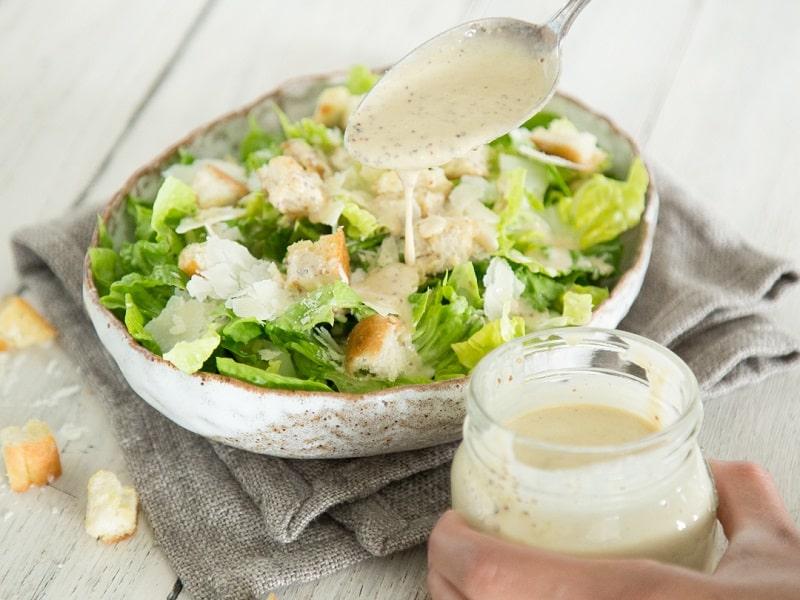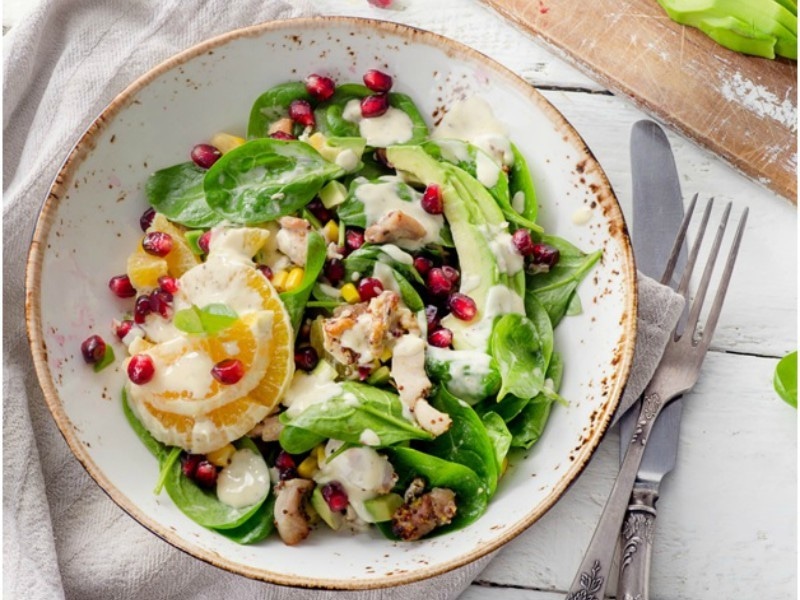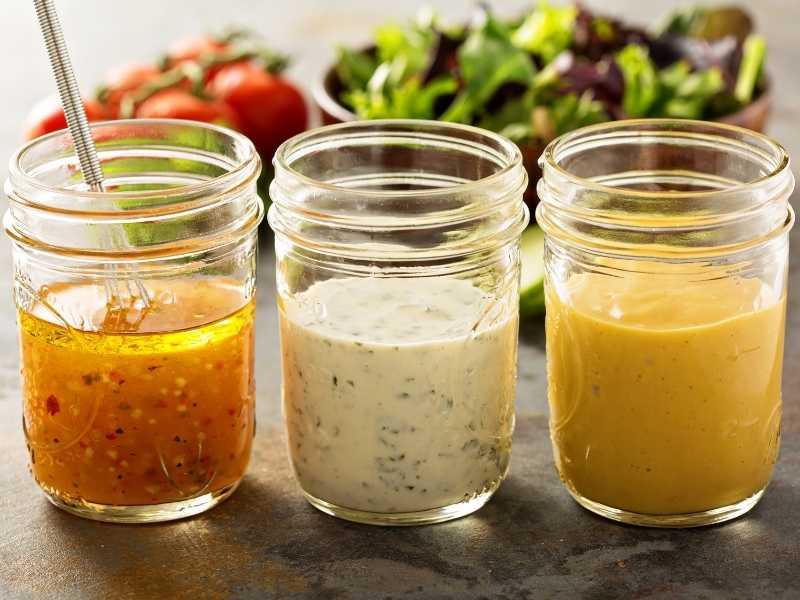Exploring the World of Salad Dressings: A Sumptuous Journey
Introduction:
Salad dressings are not just mere condiments; they are the magical potion that can transform a plate of greens into a delectable and satisfying meal. These flavorful accompaniments have evolved significantly over the years, catering to diverse taste preferences and dietary needs. In this summary, we embark on a culinary journey to uncover the versatile and tantalizing world of salad dressings.
1. Historical Evolution:
Salad dressings trace their origins back thousands of years. The ancient Egyptians were known to use vinegar and oil as dressing for their greens. Over time, different cultures and cuisines developed unique variations. The Romans, for example, introduced the concept of emulsification by combining ingredients to create creamy dressings.
2. Components of Salad Dressings:
a. Base: The foundation of every salad dressing is typically oil or a combination of oil and liquid ingredients such as vinegar, lemon juice, or yogurt.
b. Acid: Acids like vinegar, lemon juice, or citrus fruits add tanginess and brightness to dressings, enhancing the flavor profile.
c. Emulsifiers: Emulsifiers like egg yolks or mustard help stabilize and thicken dressings by binding the oil and liquid components together.
3. Types of Salad Dressings:
a. Vinaigrettes: Vinaigrettes are perhaps the most widely recognized and versatile salad dressings. They are made by emulsifying oil and vinegar with herbs, spices, and other flavorings. Common variations include balsamic, red wine, or apple cider vinegar vinaigrettes.
b. Creamy Dressings: Creamy dressings, such as ranch, Caesar, and blue cheese, are created by adding ingredients like mayonnaise, sour cream, or yogurt to the base. They provide a luscious texture and enhance the creamy mouthfeel of salads.
c. Asian-style Dressings: Asian-inspired dressings often feature ingredients like soy sauce, sesame oil, ginger, and garlic. These dressings complement Asian vegetable varieties, adding complexity and umami flavors.
d. Sweet Dressings: Sweet dressings, such as honey mustard or fruit vinaigrettes, cater to those who prefer the balance of tangy and sweet flavors. These dressings can be used to elevate fruit salads or add a touch of sweetness to green salads.

e. Specialty Dressings: From tahini-based dressings in Middle Eastern cuisine to peanut dressings in Thai cuisine, specialty dressings showcase unique flavor profiles from around the world.
4. Health Considerations and Diet-Friendly Options:
a. Low-Fat Dressings: Many people seek healthier alternatives for their dressings. Low-fat or light dressings use reduced amounts of oil or substitute it with alternatives like Greek yogurt or buttermilk, maintaining the creamy consistency while cutting down on calories.
b. Vegan and Plant-Based Options: With the growing popularity of plant-based diets, dressings have adapted to cater to vegan lifestyles. Ingredients like avocado, tahini, or nut-based creams can be used to create creamy vegan dressings.
c. Allergen-Free Dressings: Individuals with dietary restrictions or allergies can also find suitable options. Dressings made without common allergenic ingredients like dairy, gluten, or nuts are available, allowing everyone to enjoy salads without worries.
5. DIY Dressings:
Many people prefer homemade dressings due to the control over ingredients and flavors. By making dressings from scratch, individuals can experiment with unique combinations, adjust flavors to personal preferences, and avoid preservatives and additives found in store-bought options.
6. Innovative Trends and Flavors:
a. Fusion Flavors: With globalization and culinary experimentation, fusion flavors have made their way into salad dressings. Combining ingredients from different cultures can create exciting combinations, such as miso-ginger or cilantro-lime dressings.
b. Superfood-based Dressings: The increasing focus on health and nutrition has led to the emergence of superfoods in dressings. Ingredients like turmeric, matcha, or spirulina have found their way into dressings, adding both flavor and nutritional benefits.
Conclusion:
Salad dressings play a vital role in enhancing the overall sensory experience of a salad, and their incredible variety ensures that there is something for every palate. From classic vinaigrettes to creamy and exotic dressings, the world of salad dressings offers an endless array of flavors to elevate your salads to new heights. So, go ahead and explore the enchanting world of dressings, experiment with homemade recipes, and indulge in the pleasure of a perfectly dressed salad.Exploring the World of Salad Dressings: A Sumptuous Journey
1. Market Overview:
The salad dressing industry has witnessed significant growth in recent years, driven by increasing health consciousness and the growing popularity of salads as a healthier meal option. In the United States alone, the salad dressing market was valued at over $3 billion in 2020. This growing demand presents a range of opportunities for businesses in the salad dressing industry.
2. Market Trends and Consumer Preferences:

a. Clean Label and Natural Ingredients: Consumers are increasingly seeking salad dressings with clean and natural ingredients. Manufacturers are responding by eliminating artificial additives, preservatives, and high-fructose corn syrup from their products.
b. Flavor Innovation: In today’s culinary landscape, consumers are increasingly adventurous and open to diverse flavors. Dressing manufacturers are incorporating unique and innovative flavor combinations into their products, catering to consumer demands for exciting taste experiences.
c. Organic and Sustainable Options: With the increasing emphasis on sustainability and ethical sourcing, consumers are leaning towards organic and environmentally-friendly salad dressings. Companies that align with these values have a competitive edge in the market.
d. Convenience and Portability: As busy lifestyles become the norm, consumers seek convenient options. Single-serve or travel-sized salad dressing packets have gained popularity, enabling consumers to enjoy meals on the go.
e. Private Label and Store Brands: Private label and store-brand salad dressings have gained market share, offering consumers affordable options without compromising on taste or quality. Retailers partnering with dressings manufacturers find success in meeting consumer demand and boosting store sales.
3. Industry Challenges:
a. Shelf Life and Stability: Salad dressings are perishable products that need appropriate preservation methods to maintain quality and extend shelf life. Manufacturers must navigate challenges to ensure freshness and stability without compromising the taste and texture of their products.
b. Intense Competition: The salad dressing market is highly competitive, with numerous established players and new entrants vying for market share. Companies need to differentiate their products through innovation, unique flavors, and marketing strategies to gain a competitive edge.
c. Health and Nutritional Concerns: While salad dressings can enhance the nutritional value of meals, concerns about ingredients like fat, salt, and sugar levels persist. Manufacturers must address these concerns by offering healthier alternatives or clearly labeling nutritional information to help consumers make informed choices.
d. Distribution and Retail Landscape: Ensuring efficient distribution channels and securing shelf space in grocery stores can be a challenge for dressings manufacturers. Companies need to establish strong relationships with retailers or consider alternative distribution models, such as e-commerce platforms, to reach a wider consumer base.
4. Branding and Marketing Strategies:
a. Packaging Design: Eye-catching and visually appealing packaging can attract consumers and communicate the product’s quality and flavor profile. Companies can leverage packaging design to differentiate their salad dressings and create a memorable brand identity.
b. Social Media Presence: Utilizing social media platforms to showcase recipes, engage with consumers, and build brand loyalty is crucial in today’s digital age. Companies can collaborate with influencers or develop innovative campaigns to increase brand awareness and drive consumer engagement.
c. In-store Promotions: Collaborating with grocery stores to offer in-store demonstrations and tastings can help introduce consumers to new dressings and drive sales. Coupons, loyalty programs, and cross-promotions with complementary products can also boost brand visibility and customer loyalty.
5. Partnerships and Collaborations:

Collaboration with other food manufacturers, chefs, or health professionals can help dressings companies reach broader audiences and tap into new market segments. Partnerships can involve cross-promotion, co-branded products, or incorporating dressings into meal kits or foodservice menus.
6. Export Opportunities:
The global market offers abundant opportunities for salad dressing exporters. Different regions have unique tastes and preferences, presenting opportunities for companies to modify their dressings to cater to specific markets. Expanding into international markets requires understanding local regulations, packaging requirements, and cultural nuances.
7. Product Innovation:
a. Health-centric Offerings: Capitalizing on the growing desire for healthier food choices, companies can develop dressings that cater to specific dietary needs, such as low-sodium, low-fat, or plant-based options.
b. Functional Dressings: The incorporation of functional ingredients, such as probiotics, antioxidants, or adaptogens, can add nutritional value and health benefits to dressings, further appealing to health-conscious consumers.
c. Customizable Flavors: Allowing consumers to personalize their dressing flavors by offering customizable options or recipe kits can increase product engagement and build brand loyalty.
d. Limited Editions and Seasonal Offerings: Introducing limited edition or seasonal flavors creates a sense of exclusivity and encourages consumers to explore and experiment with different dressings throughout the year.
8. Production and Quality Control:
Manufacturers need to invest in quality control processes to ensure consistency and maintain the highest standards of taste, texture, and safety. Thorough testing, transparency in ingredient sourcing, and rigorous quality assurance protocols are essential in building consumer trust and loyalty.
9. Sustainability Initiatives:
Companies can demonstrate their commitment to sustainability by implementing eco-friendly practices throughout their supply chain. This includes using recyclable or compostable packaging materials, minimizing waste, and sourcing ingredients from sustainable and ethical sources.
10. Foodservice Opportunities:
In addition to retail sales, dressings manufacturers can tap into the foodservice industry by partnering with restaurants, cafes, or catering services. Offering bulk packaging or creating exclusive flavors for the foodservice sector can expand market reach and increase brand visibility.
Conclusion:

The salad dressing market presents a dynamic landscape of opportunities and challenges for companies. Ongoing consumer preferences for healthier, flavorful, and sustainably-sourced options provide a fertile ground for innovation and growth. By understanding market trends, investing in branding, marketing, product innovation, and maintaining stringent quality control, businesses can carve a niche in the ever-evolving world of salad dressings.









